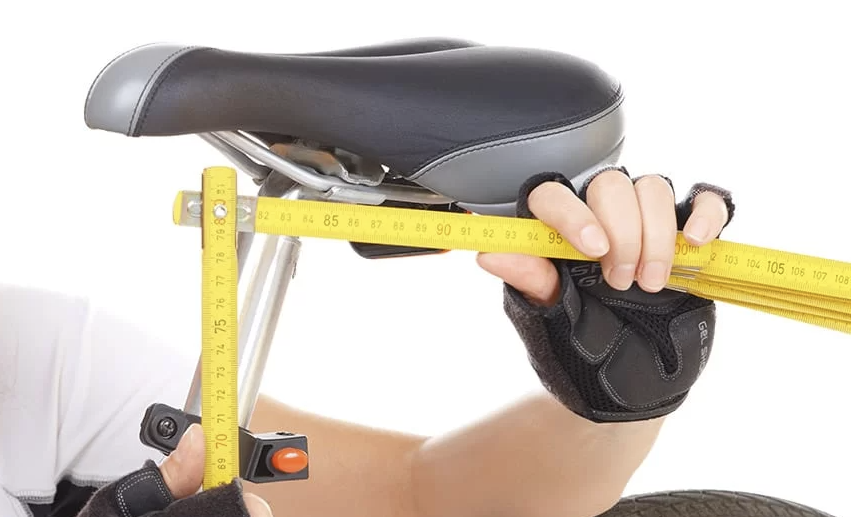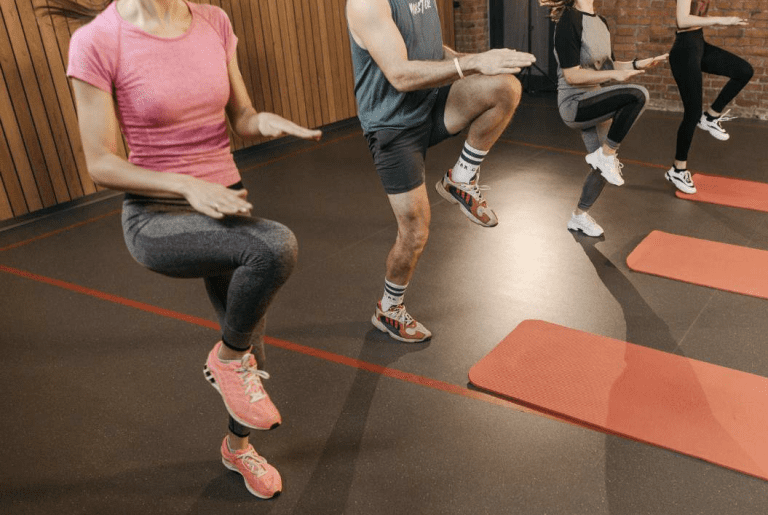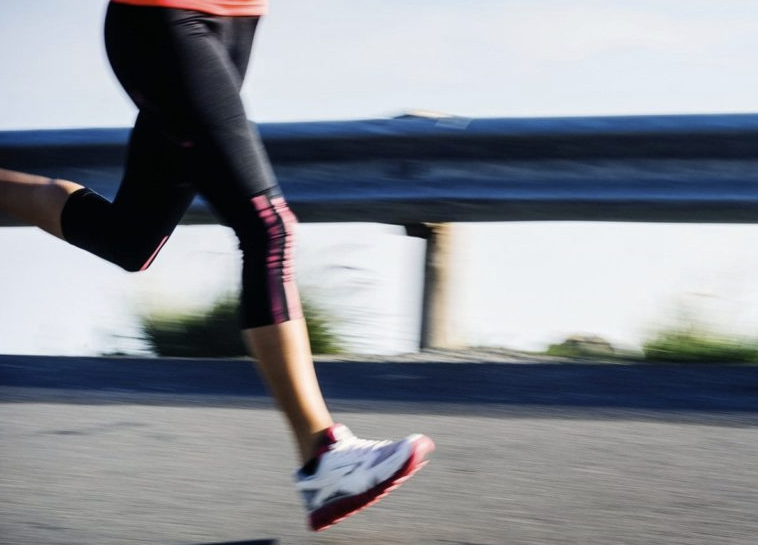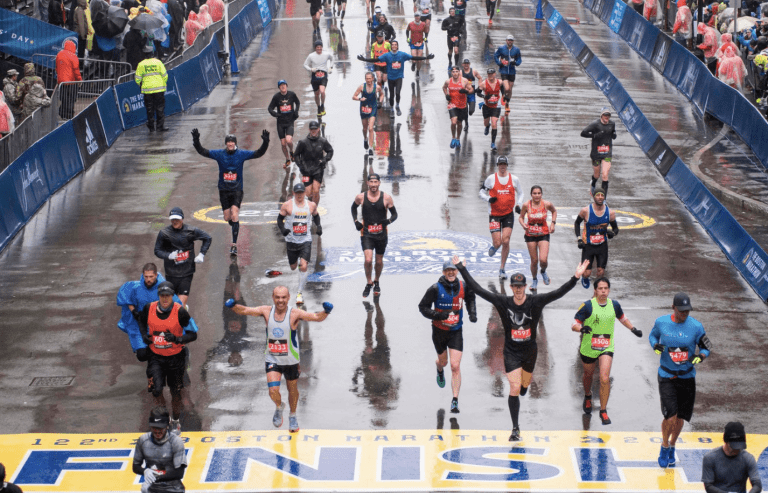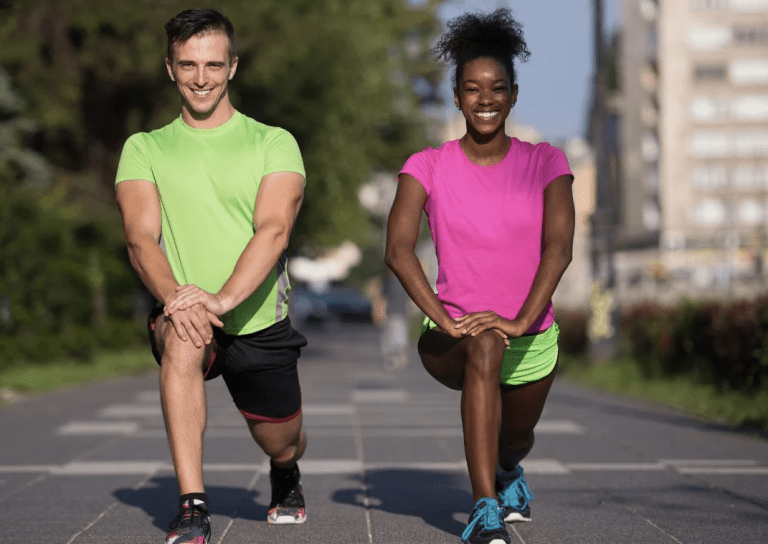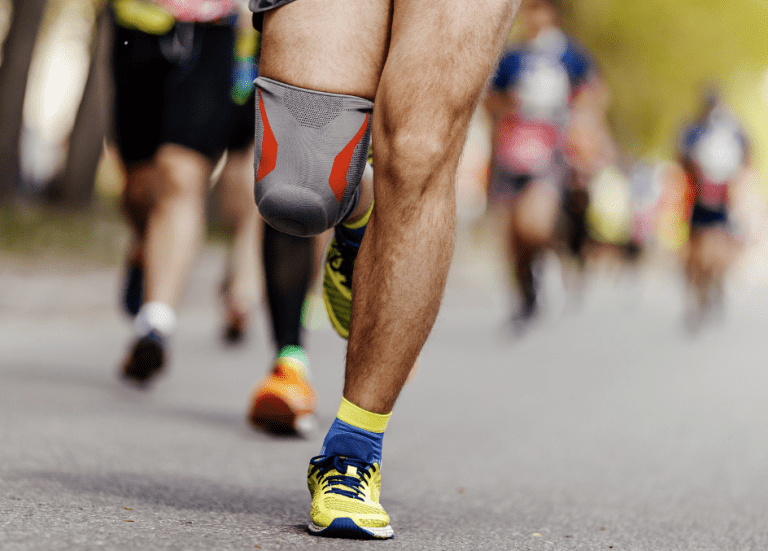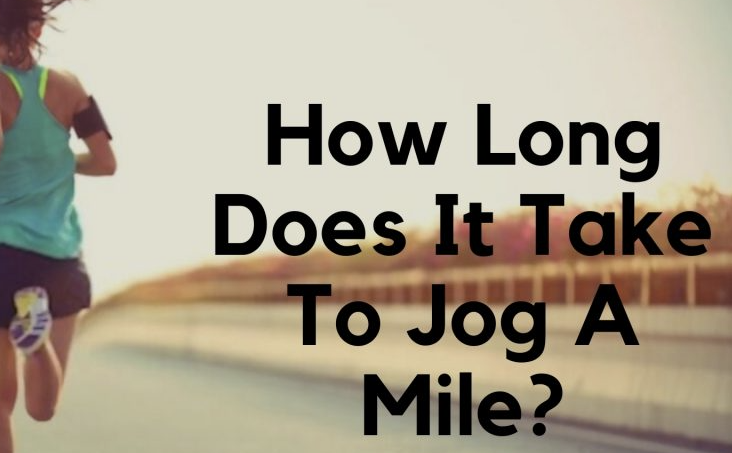Proper Body Alignment and Bike Seat Setup
Ensuring proper body alignment on your bike is crucial for a comfortable ride.
Adjusting the bike seat position along its rails, tilting it at different angles, and moving it backward or forward can help distribute weight evenly across your bum, perineum, legs, feet, arms, and hands.
This will alleviate pressure on sensitive areas like your lower back.
Adjusting Bike Seat Position Along Its Rails
To achieve optimal comfort while cycling, adjust the bike seat position along its rails.
This allows you to find the perfect balance between supporting your sit bones and reducing pressure on soft tissues.
Shift the saddle ahead if you experience discomfort in your lower back, or reposition it backward if you sense pain in your knees.
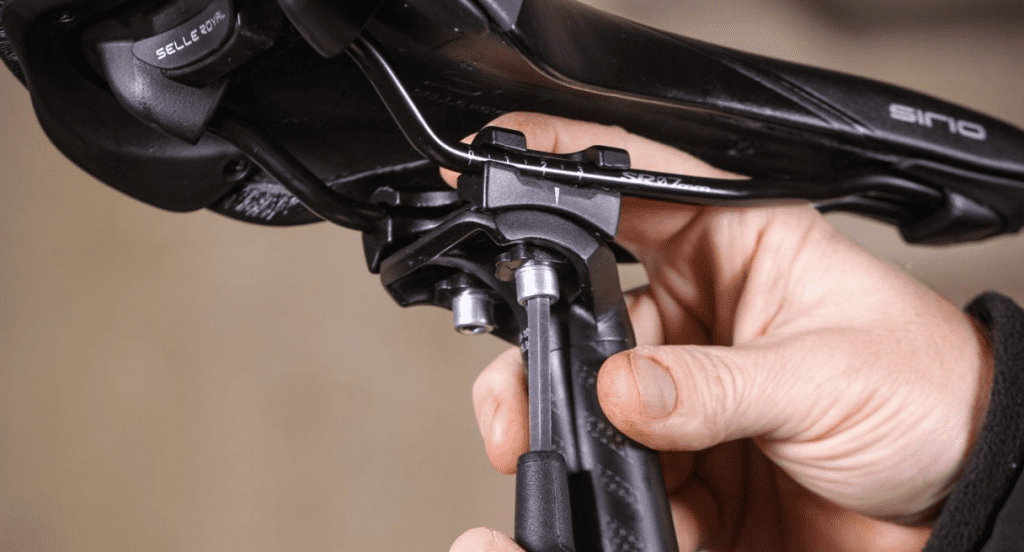
Tilting The Bike Seat To Find The Perfect Angle
The angle of your bike seat plays a significant role in overall comfort during rides.
A slightly downward tilt can relieve pressure from sensitive areas, but be cautious not to overdo it as this may cause strain on wrists and hands.
Conversely, an upward tilt might provide better support for sit bones but could lead to numbness due to excessive pressure on soft tissues.
Try different angles to determine which is most comfortable for you.
Moving The Bike Seat Backward Or Forward
- Seat Forward: If you’re experiencing discomfort near the front part of the bike seat or feeling too stretched out when reaching handlebars – try moving the seat forward which shifts more weight onto sit bones thereby providing relief from undue stress placed upon delicate regions such as genitals/perineum area.
- Seat Backward: On the other hand, if you’re feeling cramped or experiencing knee pain during rides, try moving your bike seat backward.
This adjustment allows for a more relaxed position and reduces stress on joints while cycling.
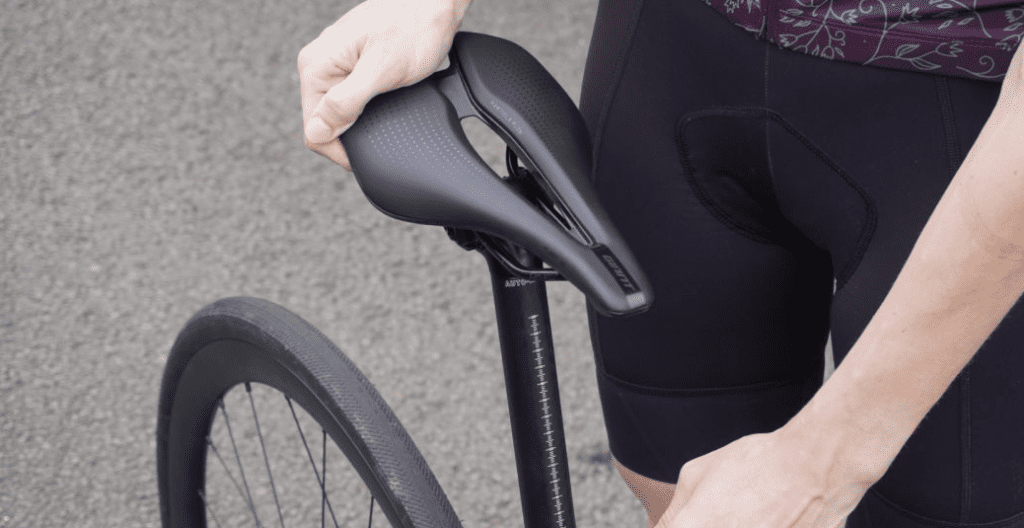
In addition to these adjustments, it’s essential to consider factors like saddle height and handlebar height when setting up your bike for maximum comfort.
Properly adjusting the saddle height ensures that your legs can fully extend without overextending at the bottom of each pedal stroke.
Similarly, an appropriate handlebar height prevents unnecessary strain on your neck and shoulders while riding.
Adjusting your bike seat position and angle can alleviate pressure on sensitive areas like your lower back, sit bones, and soft tissues. Experiment with different positions by moving the seat forward or backward along its rails and tilting it slightly downward to find what works best for you. Properly adjusting saddle height and handlebar height also play a significant role in overall comfort during rides.
Invest in Well-Fitting Cycling Shorts
Long rides on a bike can be uncomfortable, but the right cycling shorts make all the difference.
Chamois Leather Padded Shorts
Chamois leather padded shorts are a popular choice among cyclists due to their moisture-wicking properties and ability to conform to your body shape over time.
Gel-Filled Padded Cycling Shorts
Gel-filled padded cycling shorts utilize advanced gel technology for added cushioning effect, ensuring that discomfort doesn’t hinder your performance during long rides.
- Finding Your Perfect Fit: Look for brands that offer multiple sizing options so you can choose the one that best suits your body type.
- Consider Your Riding Style: The type of padding you require may vary depending on how often and where you ride.
- Maintaining Your Shorts: To keep your shorts fresh for every ride, it’s crucial to wash them regularly following manufacturer guidelines.
Investing in well-fitting cycling shorts with appropriate padding is an effective way to make your bike seat more comfortable during long rides.
Upgrade Your Bike Seat for a More Comfortable Ride
Replace your uncomfortable bike seat with a metal or carbon fiber option for a more durable and breathable ride.
Metal Saddles: Comfort and Performance in One
Upgrade to a metal bike saddle for better support, durability, and easy adjustment.
- Durability: Sturdier construction means a longer lifespan.
- Better Support: Metal provides improved support for your sit bones.
- Ease of Adjustment: Quickly adjust the saddle height and angle to find the perfect fit.
Carbon Fiber Bike Seats: Lightweight and Sleek
For an even lighter option, consider a carbon fiber bike saddle for a smoother ride and weight savings.
- Sleek Design: The modern look of carbon fiber adds style points to any bicycle setup.
- Vibration Damping: Carbon fiber absorbs road vibrations better than plastic or metal, providing a smoother ride.
- Weight Savings: Significantly lighter than other materials, making a noticeable difference in your overall cycling experience.
Test out diverse choices and mull over elements, for example, your riding style, physical make-up, and individual inclinations to locate the ideal seat for you. Ask fellow cyclists or local bike shops for recommendations and check online reviews before making a decision. Invest in a high-quality seat for long-lasting comfort during rides.
Upgrade Your Bike Seat with Cushioning Solutions
Don’t let uncomfortable bike seats ruin your ride – add some extra cushioning with gel seat pads or covers.
Gel Seat Pads: The Ultimate Comfort Solution
Gel seat pads conform to your sit bones, distribute weight evenly, and absorb shock for a smoother ride.
Bike Seat Covers: A Budget-Friendly Option
Bike seat covers add an extra layer of cushioning and protect your original bike seat from wear and tear.
These saddles cater to different types of riders and feature cutouts or channels to relieve pressure on sensitive areas while providing ample support.
Specialized Biking Gear
Upgrade your biking gear for a more comfortable ride and prevent discomfort in the shoulders and back area.
Importance of Wider Tires
Wider tires offer better traction and stability on various terrains, reducing discomfort caused by an uncomfortable bike seat. Lowering tire pressure can also help absorb road vibrations.
Tips for Adjusting Tire Pressure:
- Determine optimal range: Consult your bike’s manufacturer guidelines for recommended pressures.
- Pump accurately: Use a reliable floor pump with an accurate gauge.
- Fine-tune gradually: Make small adjustments until you find what feels best.
Proper Saddle Installation
Ensure proper bike seat setup to prevent discomfort in the sit bones and saddle sores.
- Level the saddle: Use a level to check that your bike seat is parallel with the ground.
- Adjust fore/aft position: Move the seat forward or backward along its rails until you achieve a comfortable knee angle when pedaling.
- Tighten securely: Ensure all bolts are tightened adequately to prevent unwanted movement during rides.
Investing in padded shorts, seat covers, and adjusting handlebar height and saddle angle can also help alleviate discomfort. Consult credible sources for more information on how to improve your biking gear and feel comfortable during rides.
Eliminate Chafing with Proper Cycling Attire
Don’t let uncomfortable bike seats ruin your ride – invest in padded bike shorts to reduce friction and prevent chafing.
Bike Shorts for Comfortable Rides
Bike shorts are a must-have for any cyclist, providing a snug fit and moisture-wicking material to keep you dry and comfortable during long rides.
The padding in bike shorts, made from chamois leather or gel inserts, cushions your sit bones and reduces pressure points that can cause saddle sores or numbness.
- Chamois Leather: Offers excellent moisture absorption and breathability.
- Gel Inserts: Provide cushioning without adding bulkiness.
Proper Cycling Attire
To avoid discomfort from rubbing, wearing the right apparel is as critical as donning padded shorts. Choose moisture-wicking, snug-fitting clothing made specifically for cycling to reduce friction and stay comfortable.
Here are some tips for selecting the right cycling attire:
- Choose seamless garments: Eliminate seams that can rub against your skin during rides.
- Select breathable fabrics: Materials like polyester or nylon wick away sweat and dry quickly.
- Avoid cotton: Cotton absorbs moisture but dries slowly, leading to dampness and chafing.
Opting for the right cycling apparel can help ensure a pleasant ride, free from any irritation or rubbing.
Consider Purchasing a New Saddle if Necessary
If you’re still feeling discomfort after trying all other solutions, it might be time to invest in a new bike seat.
Signs it’s time for a new saddle
If discomfort persists, worn-out padding compromises support and riding style has shifted, it may be time to invest in a new bike seat.
- Persistent pain despite adjustments and added cushioning
- Worn-out padding causing decreased support
- A change in riding style requiring a different type of saddle
Finding the perfect replacement
Measure the distance between your sit bones, consider your preferred cycling activities, test out different saddles, and read online reviews to find the perfect replacement.
- Measure the distance between your sit bones
- Consider your preferred cycling activities
- Test out different saddles at local bike shops or through test-ride programs
- Read online reviews from fellow cyclists to help make an informed decision
Investing in a new saddle can significantly improve overall comfort during rides, allowing you to enjoy cycling without unnecessary pain or discomfort.
FAQs in Relation to How to Make a Bike Seat More Comfortable
How to Make Your Bike Seat Less Painful
Proper body alignment and bike setup are key to reducing pain from your bike seat; adjust saddle position, height, and angle for optimal comfort, invest in well-fitting cycling shorts with padding, or consider upgrading to a more comfortable saddle design.
How to Make Your Men’s Bike Seat More Comfortable
Explore different saddle materials like gel-filled or carbon fiber designs, add cushioning solutions such as gel pads or covers, ensure proper installation of the seat, and address any chafing issues with appropriate gear.
How to Get Used to a Hard Bike Seat
Gradually increase ride duration while wearing padded cycling shorts for added cushioning, make sure the saddle is properly installed at the correct height and angle, and over time, your body will adjust to the firmness of the saddle.
How to Make Your Kids’ Bike Seats More Comfortable
Choose saddles designed specifically for children with softer materials and extra padding where needed, consider adding cushioned covers or gel pads if necessary, and adjust tire pressure for smoother rides.
Conclusion
How to Make Your Bike Seat More Comfortable:
- Proper body alignment and bike setup are key to a comfortable ride.
- Invest in well-fitting cycling shorts to reduce friction and chafing.
- Explore different saddle materials and designs to find what works best for you.
- Consider additional cushioning solutions, such as gel seat covers or padded shorts.
- Upgrade your biking gear, including your bike seat, to improve overall comfort.
- Ensure proper installation of the bike seat to prevent any unnecessary discomfort.
- Address chafing issues with anti-chafing creams or powders.
By following these tips, you can enjoy longer rides with less discomfort and pain in your nether regions.

